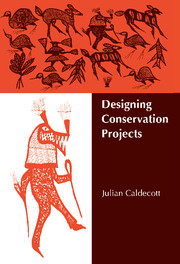Book contents
- Frontmatter
- Contents
- Foreword by Daniel H. Janzen
- Preface
- Acknowledgements
- 1 Introduction
- 2 Baram River, Sarawak
- 3 Cross River, Nigeria
- 4 Siberut and Flores Islands, Indonesia
- 5 Forest fragments in China and the Philippines
- 6 Costa Rican linkage projects
- 7 Irian Jaya, Indonesian New Guinea
- 8 Project themes and practicalities
- 9 Options for conservation
- 10 Options for development
- 11 Options for changing people's minds
- 12 Summary and conclusions
- Glossary
- Bibliography
- Index
5 - Forest fragments in China and the Philippines
Published online by Cambridge University Press: 04 February 2010
- Frontmatter
- Contents
- Foreword by Daniel H. Janzen
- Preface
- Acknowledgements
- 1 Introduction
- 2 Baram River, Sarawak
- 3 Cross River, Nigeria
- 4 Siberut and Flores Islands, Indonesia
- 5 Forest fragments in China and the Philippines
- 6 Costa Rican linkage projects
- 7 Irian Jaya, Indonesian New Guinea
- 8 Project themes and practicalities
- 9 Options for conservation
- 10 Options for development
- 11 Options for changing people's minds
- 12 Summary and conclusions
- Glossary
- Bibliography
- Index
Summary
Introduction
An increasing number of tropical countries have only small areas of remaining natural forests, distributed in small patches (Collins, 1990; Collins, Sayer, & Whitmore, 1991; Sayer, Harcourt, & Collins, 1992). Conserving their native species has thus often come to mean working with fragments of habitat and small, remnant populations. This work must usually be done against the strong social and economic pressures which caused widespread deforestation in the first place, and which are often still active around each nature reserve (Laidlaw, 1994). Conservationists must also meet and somehow overcome the challenges posed by ecological and genetic constraints. Minimum populations must be maintained if wild species are not to drift into extinction, and minimum areas of habitat must be retained to support those populations (Diamond & May, 1976; Wilcox, 1980; Frankel & Soulé, 1981; Lovejoy et al, 1986; see Chapter 9).
Many tropical forest species occur at low population densities, so large areas of habitat are needed to support viable samples of their populations. A rough guideline is that a tropical forest reserve should be 500–1000 km2 in area if most native species are to survive there in the long term (Myers, 1986). Hainan Island in South China, and southern Luzon in the Philippines, are two places where deforestation and forest fragmentation are far advanced, and which possess large numbers of species, many of which are endemic. Projects in these areas have no option but to try to reconcile human need for space and other resources with the constraints of ecology and population biology.
- Type
- Chapter
- Information
- Designing Conservation Projects , pp. 83 - 109Publisher: Cambridge University PressPrint publication year: 1996



